Teaching Grammar with Busy Things
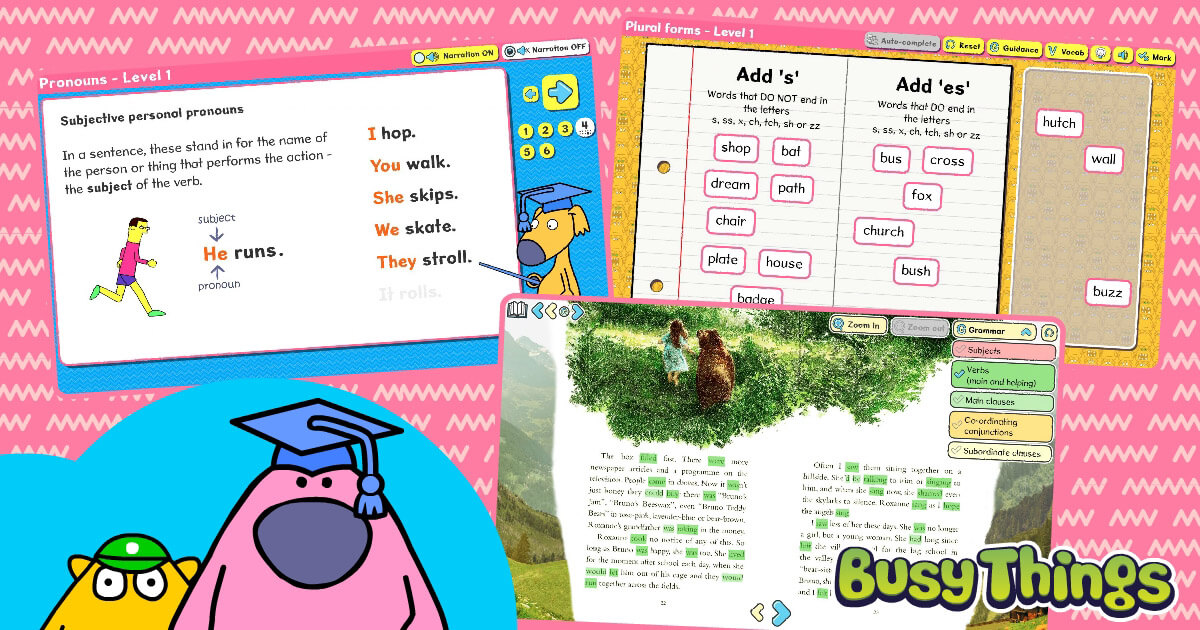
Grammar is an essential element of the National Curriculum (NC) for English, and an important part of developing children’s language at primary school. Having a good grasp of grammar is critical for children to be able to tailor their speech and writing for different purposes and audiences.
Whilst understanding the technical terms and rules is necessary for the children to succeed in their SATs, knowing the best language choices to make and techniques to use in their own work to express themselves clearly and confidently is what it’s really all about.
Here at Busy Things, we are developing a whole array of grammar exercises to meet the NC criteria, which build on what’s been learnt before. In this blog, we highlight the key areas of the National Curriculum relating to grammar for each year group. We’ve tried to include a mix of activity types (classifying activities, demos, quizzes, book extracts, writing projects) so you can see the depth as well as the breadth of what we offer.
If you’d like to see more as a result of this taster, feel free to explore Busy Things further. This is best achieved by taking a free trial, which you can do here.
Year 1
In Year 1, pupils should be taught to:
• Recognise regular plural noun suffixes -s or -es [for example, dog, dogs; wish, wishes], including the effects of these suffixes on the meaning of the noun
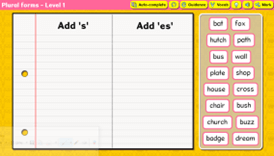
Our ‘Plural forms: -s and -es 1′ classifying activity is great for testing and reinforcing children’s understanding of plural forms.
It provides everything you will need, including guidance to help you teach and built-in marking functionality so you can either set the exercise as an assessment or get the children to mark their efforts as they go. You can also ask it to auto-complete to save you the headache and time of working out all the answers for yourself!
The activity works well after our ‘Plural or singular?’ activity and before ‘Plural forms: -s and -es 2’ which includes words that add an extra consonant in addition to the -es.
Year 2
In Year 2, pupils should be taught to:
• Learn how to use both familiar and new punctuation correctly, including full stops, capital letters, exclamation marks, question marks, commas for lists and apostrophes for contracted forms and the possessive (singular)
• Learn how to use:
– Sentences with different forms: statement, question, exclamation, command
– Expanded noun phrases to describe and specify [for example, the blue butterfly]
– The present and past tenses correctly and consistently including the progressive form
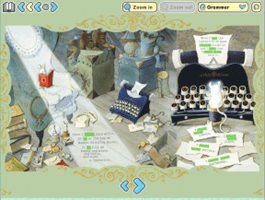
The extract “Hermelin the Mouse Detective” on Busy Things is a useful activity to play to help children identify the different tenses used in writing.
Using the interactive grammar feature available from Year 2, you can highlight all the verbs, for example, and discuss each in turn by asking, “Is that something that is happening now or that has already happened?”
Years 3 and 4
Pupils should be taught to:
• Develop their understanding of the concepts set out in English Appendix 2 by:
– Extending the range of sentences with more than one clause by using a wider range of conjunctions, including when, if, because, although
– Using the present perfect form of verbs in contrast to the past tense
– Choosing nouns or pronouns appropriately for clarity and cohesion and to avoid repetition
– Learning the grammar for years 3 and 4 in English Appendix 2
• Indicate grammatical and other features by:
– Using and understanding the grammatical terminology in English Appendix 2 accurately and appropriately when discussing their writing and reading.
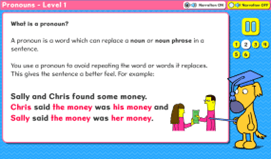
Using the ‘Pronouns demo – Level 1’ in conjunction with the ‘Level 1 – Pronouns quiz’ is an ideal way to learn, practise and reinforce children’s knowledge of pronouns, as well as being great to give yourself a quick refresher of the rules!
The demo is a new activity type for Busy Things and this one firstly explains what a pronoun is before focusing on the most common type, the personal pronoun.
Choose your play mode depending on your preference. ‘Narration ON’ plays the demo as a video; ‘Narration OFF’ allows you to advance at your own pace as you read the text yourself.
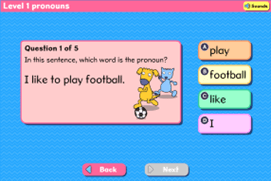
You can then test the children’s knowledge via the quiz.
Remember, if you set the quiz as an Assignment, the children will all get the same questions, making it a perfect whole-class formative assessment tool.
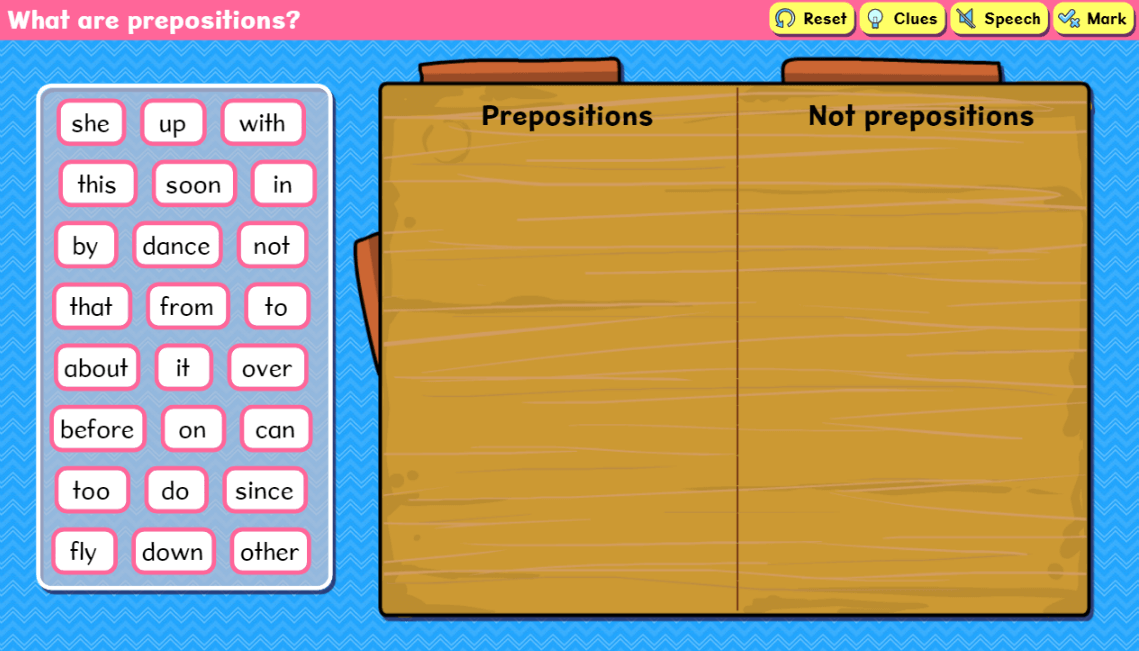
Busy Things’ ‘Preposition or not?’ classifying activity is great for reinforcing which words are prepositions and which are not.
You can choose the number and type of words to include in the Activity Settings, and just like the ‘Plural forms: -s and -es 1’, the activity has auto-complete and automatic marking functionality built in to save you time.
Years 5 and 6
Pupils should be taught to:
• Develop their understanding of the concepts set out in English Appendix 2 by:
– Recognising vocabulary and structures that are appropriate for formal speech and writing, including subjunctive forms
– Using passive verbs to affect the presentation of information in a sentence
– Using the perfect form of verbs to mark relationships of time and cause
– Using expanded noun phrases to convey complicated information concisely
– Using modal verbs and adverbs to indicate degrees of possibility
– Using relative clauses beginning with who, which, where, when, whose, that or with an implied (i.e., omitted) relative pronoun
– Learning the grammar for years 5 and 6 in English Appendix 2
• Use and understand the grammatical terminology in English Appendix 2 accurately and appropriately in discussing their writing and reading.
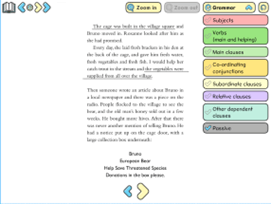
The book extract from The Dancing Bear by Michael Morpurgo is a fantastic activity for Year 5 and 6 children.
Its interactive grammar feature includes several of the structures mentioned in the curriculum, such as passive verbs and relative clauses.
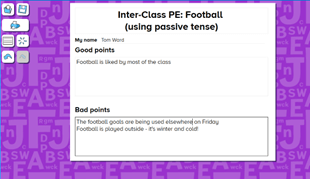
Once the children have a good understanding of the passive voice, they can use it in their own writing.
Busy Things includes a wealth of writing activities, including this new Busy Writer template. Here we’ve asked children to look at the pros and cons of playing football in their PE lesson using purely the passive tense.
Summary
We hope you’ve found our step-by-step guide to our grammar activities useful. And can see how they, along with the many other activities we have in this area, can support your teaching and learning. Take a look at the activities we’ve showcased yourself and see what your class thinks to them.
If you’re already a Busy Things subscriber, or trialing Busy Things, you’ll be able to find each of the activities by searching for the activity title within the Search tool. If you’ve not got a login, it’s quick and easy to set up a free trial. Simply click here and you’ll get 28 days free access to try out these (and all our other) activities without any obligation to subscribe.